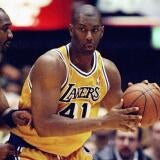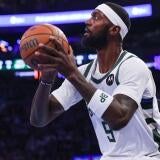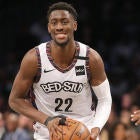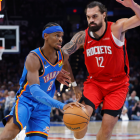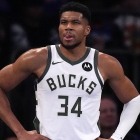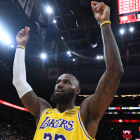Explaining why 50-point games are more prominent in the NBA than ever before
Players are rewriting record books, and some of the reasons why are counterintuitive

On March 3, eight days before the NBA shuttered its doors and went on a hiatus that may potentially cancel the 2019-20 season, Caris LeVert scored 51 points in a stunning comeback victory for his Brooklyn Nets over the Boston Celtics. That the Nets overcame a 17-point deficit in the fourth quarter was surprising, yes, but what truly stunned about that matchup was LeVert's final 17 minutes. To get to that 51-point marker, Brooklyn's young wing scored 37 points in the fourth quarter and overtime alone. His career high prior to that game was 37 points in total. Before this season, he'd never even hit 30.
In the grand scheme of things, however, performances like that are no longer particularly surprising. Had the NBA season concluded as planned, the league as a whole surely would have broken the post-merger record for most 50-point games from individual players in a single season. With a month left in the season, the previously mythical marker of individual greatness had already been reached 20 times. The modern-day record of 22 was set last season. The league in its current state is built to enable individual scoring binges that would have been unthinkable in the past. As recently as a decade ago, the NBA rarely produced even half as many 50-point games as it does now, as the graph below shows:

It isn't just that more 50-point games are happening, though. After all, when a single player averages 36 points per game as James Harden did a year ago, the simplest explanation for that uptick would be the dominance of a small group of players. But just as the total number of such games is rising steadily, so too is the number of players in a given season attaining it. Each of the past four seasons have seen at least 10 different players score 50 points in a game. Before that, it had never happened.
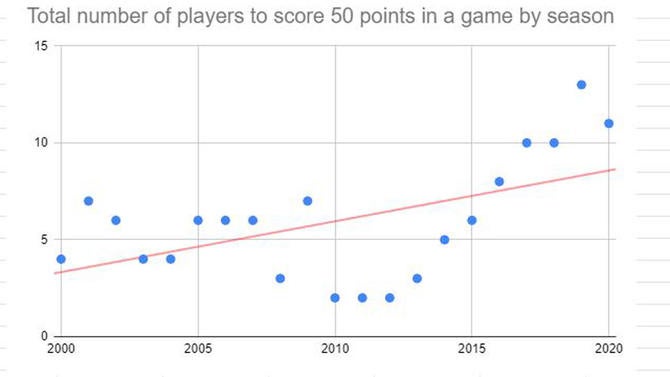
Those numbers squash most of the outliers from the mid-2000s that throw off the original graph. Take the 2006-07 season. Yes, its 18 total 50-point games were monumental at the time, but that total said little about the game at large because Kobe Bryant had 10 of them by himself.
Whereas 50 points in a single game was once the ultimate mark of an elite scorer, the sport of basketball has now evolved to a point in which almost anybody can at least push for the milestone. Corey Brewer did so despite averaging only 8.7 points per game for his career. Last season, Jamal Crawford managed to pull it off despite coming off of the bench. Klay Thompson not only became the first player ever to score 50 points in under 30 minutes in 2016, he did so while scoring 60.
So why has the 50-point game become so achievable in recent years? There are a number of factors involved, some of which make more sense than others. The best place to start is in how the game has changed.
A faster game
Common sense dictates that the easiest way to score more points is to get the ball more often. That was impossible for most of the 1990s and 2000s without actively taking shots away from teammates. The pace of NBA games steadily declined from its nadir in the 1970s until it hovered in practically the same place for nearly two decades. From the 1994-95 season through the 2010-11 campaign, the average NBA game never had fewer than 88.9 possessions or more than 93.1, according to pro-basketball reference.
The NBA has worked hard to increase the pace of its games in recent years, and it shows in the numbers. The league's average pace has either increased or stayed level in every season since 2011-12, hitting its highest levels this season since the 1980s.
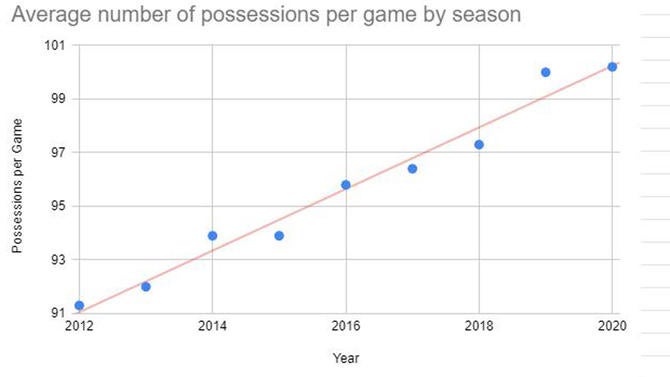
Remember, not all possessions are created equal. While players are getting more total possessions, they are also getting more of the most valuable kinds of scoring possessions: those that come in transition. While tracking data only goes back a few years, we've seen a marked increase in transition possessions per game even in that time. The 2016-17 Golden State Warriors led the NBA with 20.5 transition possessions per game, per NBA.com. That would rank seventh this season. The Portland Trail Blazers are dead-last this season with 14.3. Back then, that total would have them in a tie for 18th.
This is by far the simplest explanation for the uptick we've seen in recent years. The NBA is faster than ever. But it's also smarter than ever, which leads into by far the biggest reason we're seeing more 50-point games.
Better shot-selection
The 3-point revolution has been perhaps the most important lasting storyline in recent NBA history. Every season sees boundaries pushed and records broken, and just when you think the league has hit the upper limit of possible shooting numbers, the Houston Rockets push things a step further by forgoing the center position entirely and committing to only putting players on the floor that are at least willing to attempt 3-pointers.
In the individual scoring arena, it should surprise nobody to hear that more 3-pointers lead to more points. Three, after all, is a bigger number than two. Total scoring and efficiency numbers have peaked in recent years, and a quick glance at how 50-point scorers are getting their points paints a simple picture: they're taking more 3s.

But 3-pointers have an important ancillary effect on individual scoring in that they increase spacing. Anthony Davis attempted the fewest 3-pointers in a 50-point game this season with only two. His Los Angeles Lakers teammates, however, took 29 more. Davis scored those points primarily by posting up. Without teammates spacing the floor for him, doubling him would have been far easier and he wouldn't have reached 50.
While not every 50-point scorer is doing so with his back to the basket, the principle applies. A properly spaced floor makes scoring significantly easier. To an extent, it even weakens defenses. After all, teams are dedicated fewer and fewer minutes to big men in the interest of increasing their own spacing. That makes it easier for these elite scorers to get to the basket. The 3-pointer's increased prominence in modern basketball creates all sorts of extra scoring opportunities, but those opportunities should be equal-opportunity. Systemic changes around the NBA suggest that they are not.
Heliocentrism
In December, The Athletic's Seth Partnow coined the term "heliocentrism" to describe the recent phenomenon of teams devoting their entire offense to a single ball-handler. Over the past several seasons, that trend has become more and more pronounced.
A total of 67 players (that played at least 500 minutes) have had a usage rate above 30 percent over the past five seasons. In the five seasons before that, it was only 36. Seven of the 10 highest usage rate seasons in history have come since the 2014-15 campaign. This isn't necessarily showing up in 50-point games specifically. Such outbursts, after all, require a degree of efficiency that is system-proof, so it is not as though players are taking more shots in those games than they used.
Instead, systems are now designed for single players to exert enough control over an offense to more often hit the general range of shot attempts that would typically get a player into the 50-point area. Last season saw 49 different games in which a player attempted 30 shots. Rewind to the 2012-13 season and that number falls to 14. This obviously opens the door for superstars to organically take enough shots to score 50, but under certain circumstances, it also creates chances for players that otherwise might never sniff 50.
Load-management
Remember that 51-point game from LeVert we discussed earlier? Guess who didn't play in that game? Kyrie Irving. A month earlier, Eric Gordon got to 50 against the Utah Jazz ... with James Harden and Russell Westbrook sitting. Khris Middleton's 50-point outburst came without Giannis Antetokounmpo, Even Jamal Crawford's 50-pointer last season came without Devin Booker.
Now, in many of these cases, actual injuries were involved. In most, though, those absences were guided at least in part by caution. Harden, Westbrook and Antetokoummpo were all back by their next game, while Crawford's came in last season's finale, which Booker sat out after being shut down for the year a week earlier. The overarching point here is that more and more 50-point explosions are coming when a superstar is on the bench, and prevailing attitudes toward injuries and general physical maintenance now suggest that those players are going to be on the bench more often than ever.
This is where heliocentrism comes into play. It's not as if Brooklyn has two separate offenses, one for games that Irving plays in and one that he doesn't. Generally, a team's scheme is going to be fairly similar no matter who is playing, and if that scheme is heliocentric, it will on some level remain so even without the star around which the team normally revolves.
Caris LeVert is not Kyrie Irving. Eric Gordon is not James Harden. But for a single game, under all of the conditions we've detailed, they can be reasonable facsimiles of their more famous teammates, and without anyone to fill in their supporting roles once they've ascended to temporary superstar status, they occasionally even manage to take more shots than the superior teammates they are replacing. If those teammates are going to rest more often, it stands to reason that they will benefit more often with outlier games like this. It doesn't mean that Gordon himself is going to have one 50-point game per season when Harden and Westbrook are sitting, but rather that a few players of Gordon's general quality are going to take advantage of superstar absences to post enormous lines as he did.
Ultimately, superstars have always been able to score 50 points in a game. Maybe they do so more now than they used to, but for a certain class of player, that marker was never inaccessible. But the game has changed enough now that players of Gordon or LeVert's phylum can now get there when the stars align. As the stars align more and more often, they are going to hit that total more and more often. If the game continues changing at the rate it is now, these totals are only going to continue to rise, and the fans who enjoy such outbursts are hardly complaining.


